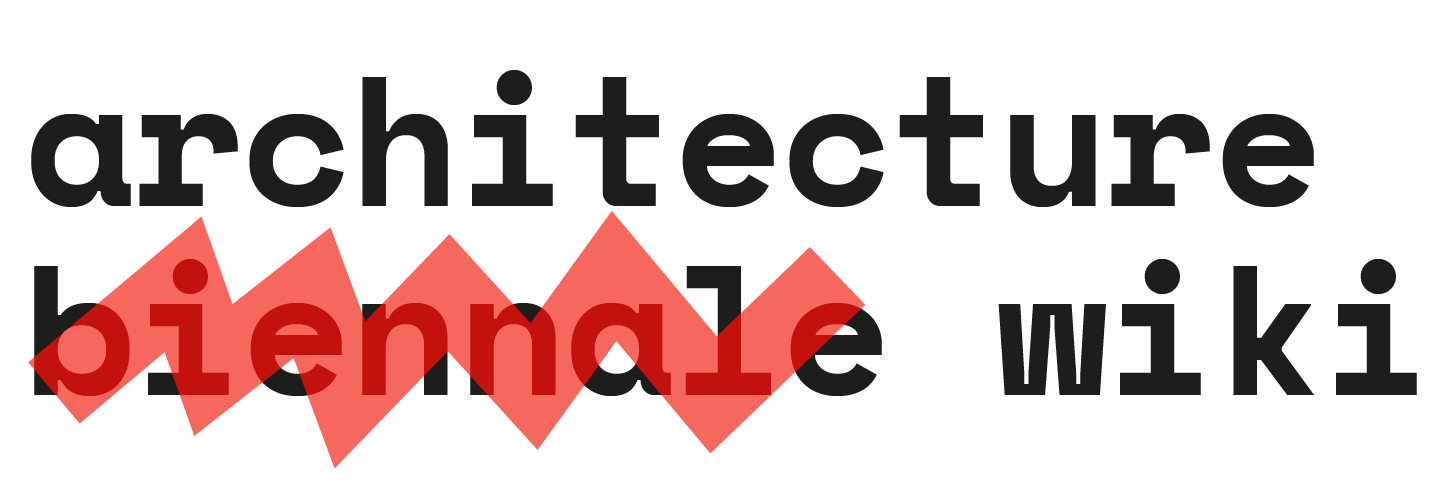the architecture
biennale wiki project
the venice architecture biennale
Ever since its inception in 1980 with the installation of the famed Strada Novissima, the International Exhibition on Architecture of the Venice Biennale (commonly known simply as the Venice Architecture Biennale) has continuously been a space for reflecting on the state of the architecture. Every two years, the Biennale’s Arsenale and Giardini become a space for experimentation and investigation, as multiple national contributions, as well as the various installations in the main exhibition, respond to the theme set forward by the invited main curator(s) for the different editions of the Biennale.
If in 2018 the theme Freespace, aimed to “describe a generosity of spirit and a sense of humanity at the core of architecture’s agenda,” the first Biennale in 1980, engaged with the notion of postmodernism with the title The Presence of the Past. Between these two editions several other themes and ideas have been debated at the Venice Architecture Biennale, as each invited main curator has identified pressing issues and used the Biennale’s collective architectural ingenuity—and visibility—to place them on the discipline’s agenda and bridge the divide between practice and discourse.
biennale editions
the wiki project
The Architecture Biennale Wiki Project is the result of a research conducted at TU Eindhoven by Sergio M. Figueiredo and the Curatorial Research Collective (CRC) during a research seminar with eleven Master students. The objective of this Wiki is quite simple: to convey the history of the Venice Architecture Biennale through its installations, national contributions and people (and, in so doing, providing a new instrument for further research into the Biennale).
By documenting the various contributions(main exhibition, national participations, collateral events, …) to the 16 editions of the Venice Architecture Biennale, this Wiki provides a firm basis to understand the processes and objectives of what has become the largest architecture exhibition in the world.
While this database already contains approximately 1000 installations (in the main exhibitions), 600 national contributions, 90 countries, and 2000 people, it must be considered a work in progress. Beyond the addition of more records, also additional information on these records is continuously uncovered and added. In such a large endeavor, inaccuracies are all but inevitable. Therefore, should you find any inaccuracy in this database, or have information and/or images that are not yet available on this Wiki, please get in touch with us.
new perspectives on the biennale
As a part of the same research seminar, students were asked to query the information compiled in this Wiki with pertinent research questions that could provide new perspectives to the Venice Architecture Biennale, particularly when considering the long historical overview provide by this Wiki. These are their questions:
– Is the influence of architectural globalization visible in national contributions?
– How did the Venice Architecture Biennale develop spatially?
– How has the Dutch contribution changed over the years?
– How to understand the scenic and theatrical character of the Venice Architecture Biennale?
– Is there space for political conflict at the Biennale?
– How has Rem Koolhaas engaged with the Biennale?
– How does the union of countries in singular pavilions affect national participations?
– How have the Biennale themes changed over time?
– How has the theme of Housing been addressed at the Biennale?
– What do the Biennale awards tell us?
Beyond these questions, we also look forward to the type of questions, insights. and scholarship that this database will foster among a broader scholarly audience. Let us know what you come up with.
acknowledgments
This database assembles various sources of information (from publications to websites) under one consistent format but, naturally, most of the information available here derives from La Biennale di Venezia’s extensive documentation and archives (including their own catalogues, brochures, and other institutional documentation). Therefore, we are indebted to the efforts of the Biennale’s archivist and librarians who have worked hard to organize and make information available. We have merely extended their work in a more accessible format.
We equally appreciate all the other sources for the material presented here (both textual as well as visual) and have, to the best of our ability, identified all the original sources and references so as to foster further research.
disclaimer
While La Biennale di Venezia is the main source for both images and information in this Wiki, the foundation bears no responsibility for this database.
